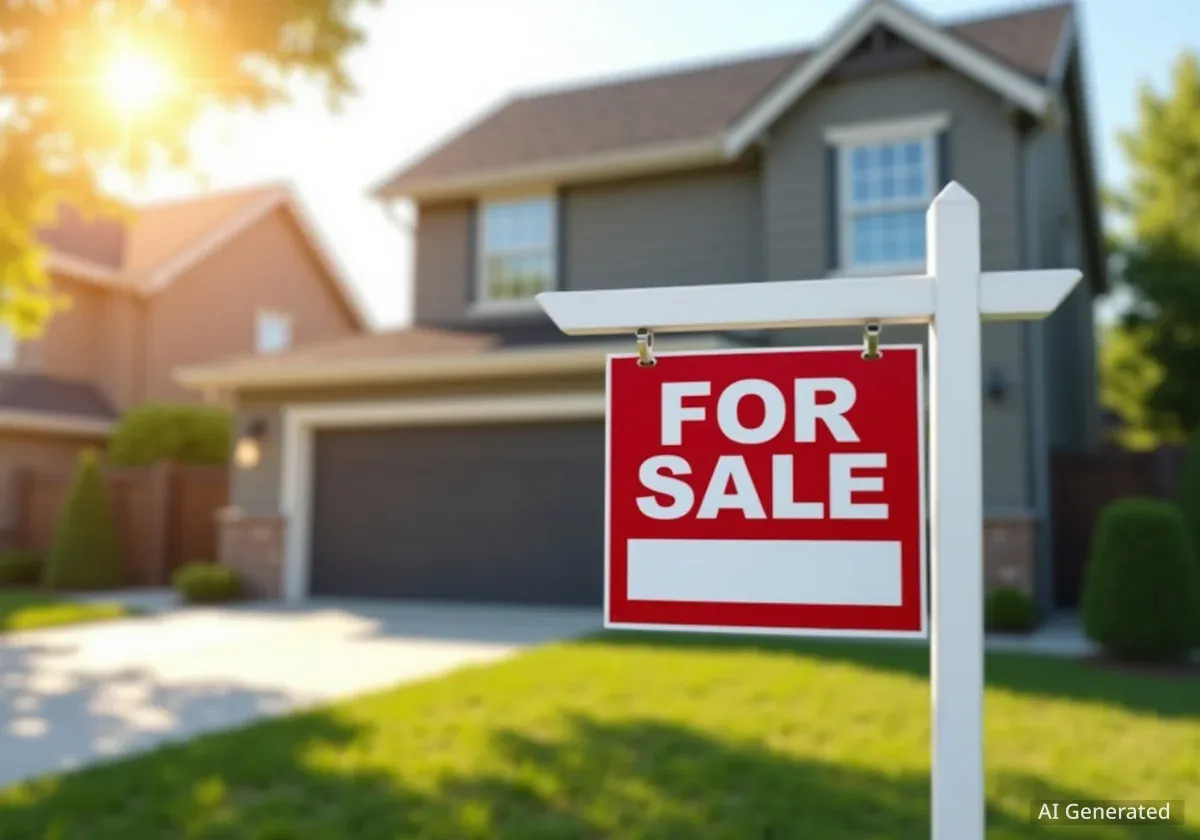The national average interest rate for a 30-year FHA mortgage has reached 6.40% as of October 11, 2025. This figure, a key indicator for potential homebuyers using government-insured loans, reflects the current cost of borrowing in the U.S. housing market. The rate is particularly relevant for first-time buyers and those with less-than-perfect credit who rely on Federal Housing Administration financing.
Key Takeaways
- The national average for a 30-year FHA mortgage interest rate is currently 6.40%.
- The Annual Percentage Rate (APR) for the same loan is slightly higher at 6.46%, providing a more complete cost picture.
- Individual rates are influenced by factors such as credit score, down payment size, and debt-to-income ratio.
- FHA loans include a mandatory Mortgage Insurance Premium (MIP), which differs from the Private Mortgage Insurance (PMI) on conventional loans.
- Borrowers should compare offers from multiple lenders to secure the most competitive terms available for their financial situation.
Understanding Current FHA Loan Rates
As of October 11, 2025, the benchmark for a 30-year FHA loan stands at a 6.40% interest rate. FHA loans, which are insured by the Federal Housing Administration, are designed to make homeownership more accessible, especially for borrowers who may not meet the strict criteria for conventional mortgages.
These loans are popular due to their more flexible qualification standards, including lower minimum credit scores and down payment requirements. The 30-year term is the most common choice, as it spreads payments over a longer period, resulting in lower monthly installments compared to shorter-term loans.
Interest Rate vs. APR
It is important for borrowers to distinguish between the interest rate and the Annual Percentage Rate (APR). The interest rate (6.40%) is the cost of borrowing the principal loan amount. The APR (6.46%) is a broader measure that includes the interest rate plus other costs, such as lender fees and mortgage insurance, giving a more accurate view of the total cost of the loan.
According to data from Bankrate, the average APR for an FHA purchase loan is 6.46%. For homeowners looking to refinance an existing FHA loan, the average APR is slightly higher at 6.98%. This difference is common, as refinance loans can sometimes carry different risk profiles for lenders.
Factors That Determine Your FHA Rate
The national average rate is a useful benchmark, but the actual rate offered to an individual borrower will vary based on several personal and market-related factors. Lenders assess each application to determine the level of risk involved before finalizing loan terms.
Your Personal Financial Profile
A lender's primary consideration is the borrower's financial health. Several key metrics are used in this evaluation.
- Credit Score: A higher credit score signals lower risk to lenders and typically results in a better interest rate. While FHA guidelines permit scores as low as 500 with a 10% down payment, a score of 580 or higher is required to qualify for the minimum 3.5% down payment.
- Down Payment: FHA loans are known for their low 3.5% minimum down payment. However, providing a larger down payment reduces the lender's risk and may lead to a more favorable interest rate.
- Debt-to-Income (DTI) Ratio: This ratio compares your total monthly debt payments to your gross monthly income. Lenders generally prefer a DTI ratio no higher than 50% for FHA loans, as it indicates you have sufficient income to manage your existing debts plus a new mortgage payment.
Economic and Lender-Specific Variables
Broader economic conditions also play a significant role. Interest rates often rise in response to high inflation and a strong economy. Conversely, rates may fall during economic downturns to encourage borrowing and spending.
Furthermore, each lending institution has its own internal policies and risk tolerance. This is why two different lenders might offer different rates to the same applicant. Shopping around and obtaining quotes from at least three to five lenders is a critical step in finding the best possible rate.
FHA Loans Compared to Conventional Mortgages
For borrowers with strong credit and a substantial down payment, a conventional loan may be an option. The choice between an FHA and a conventional loan often comes down to the total cost, particularly regarding mortgage insurance.
FHA Mortgage Insurance Premium (MIP)
FHA loans require borrowers to pay a Mortgage Insurance Premium (MIP). This includes an upfront premium of 1.75% of the loan amount, which can be financed into the loan, and an annual premium paid in monthly installments for the life of the loan in most cases.
Conventional loans, on the other hand, require Private Mortgage Insurance (PMI) if the down payment is less than 20%. A key difference is that PMI on a conventional loan can typically be canceled once the homeowner reaches 20% equity in their property. FHA MIP, for most borrowers, remains for the entire loan term.
“If you qualify for both, I’d almost certainly go for the conventional loan. FHA’s hefty mortgage insurance (MIP) includes 1.75 percent of the loan amount upfront, plus monthly premiums... If you can get a conventional loan, you’ll find that the private mortgage insurance (PMI) costs less and is easier to get rid of once your loan-to-value (LTV) ratio hits 80 percent.”
While FHA loans provide an essential pathway to homeownership for many, the long-term cost of MIP is a significant factor to consider. Some borrowers use an FHA loan to purchase a home and later refinance into a conventional loan once their credit and equity have improved.
Key Requirements for FHA Loan Applicants
Beyond the interest rate, prospective borrowers must meet several specific FHA requirements to qualify for a loan. These standards are set by the Federal Housing Administration to ensure borrowers are able to sustain homeownership.
- Loan Limits: The FHA sets maximum loan amounts that vary by county. For 2025, the limit for a single-family home in a typical area is around $524,225, but it can be as high as $1,209,750 in designated high-cost areas.
- Credit Score: A minimum score of 580 is needed for a 3.5% down payment. Applicants with scores between 500 and 579 must provide at least a 10% down payment.
- Income and Employment: Borrowers must provide proof of steady employment and a consistent income history, typically through pay stubs, W-2s, and tax returns.
- Property Standards: The home being purchased must meet certain minimum property standards and be appraised by an FHA-approved appraiser to ensure it is safe and sound.
The current 6.40% rate for 30-year FHA loans presents an opportunity for many Americans to purchase a home. By understanding the factors that influence rates and meeting the necessary qualifications, borrowers can navigate the mortgage process effectively and secure financing that aligns with their financial goals.





